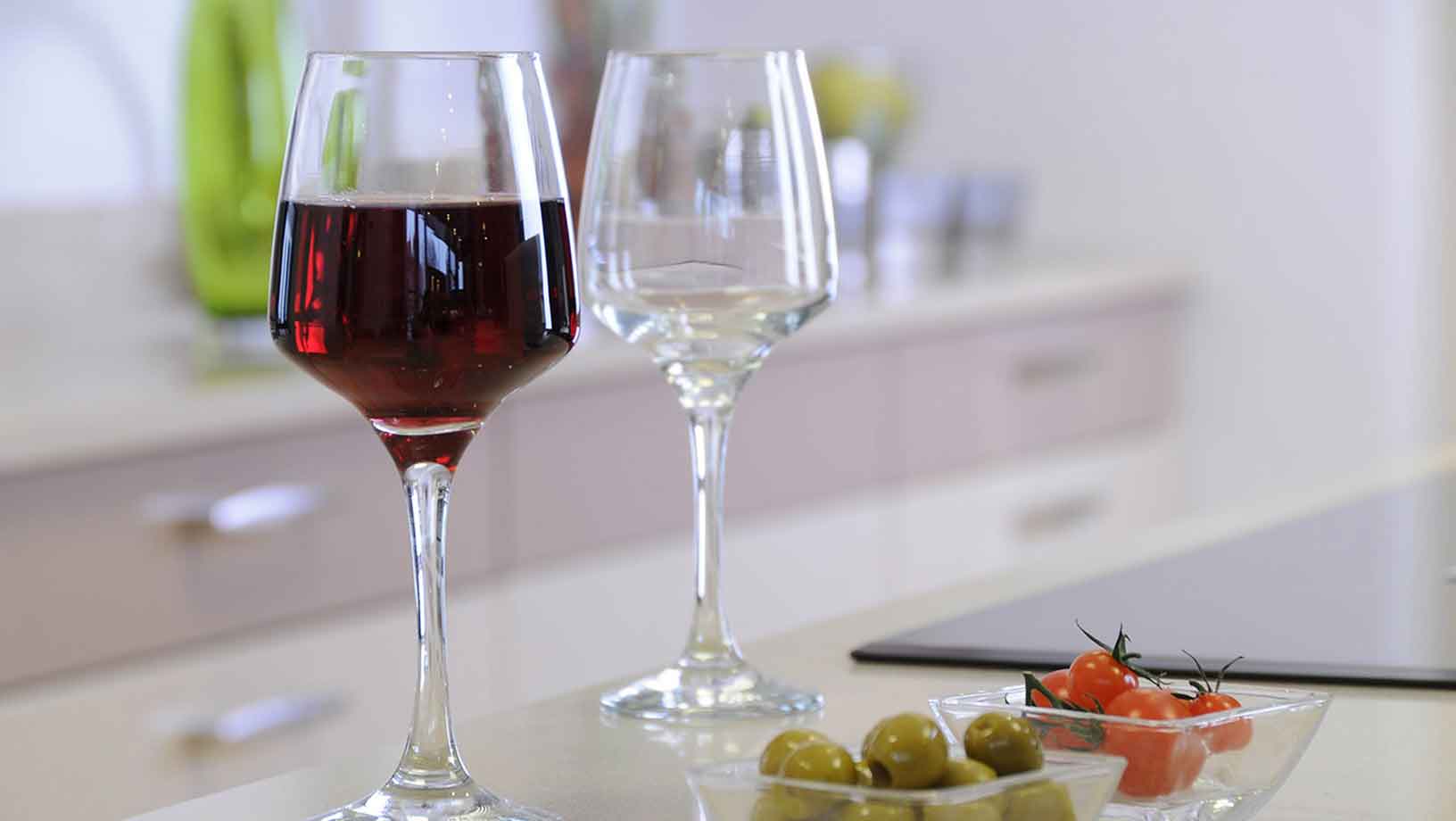Your Shopping Bag is Empty
Home & Furniture
More Than A Vessel
Here's why choosing the right glass can actually make your
drink taste better
Choosing the right glass for the right drink – be it gin, wine or whiskey – can have a real effect on how you taste and experience the drink. We asked some experts how to use this phenomenon to maximum effect.
From cups to mugs to the increasingly obnoxious mason jar, when it comes to a having a tipple at home, sometimes composure, along with common sense, can be left at the door. We’ve all been there, regrettably drinking our wine from the wrong tumbler, the wrong Stein (or even directly from the right bottle, but in the presence of the wrong company). It happens. But, the question is, to what end does the type of glass you choose actually affect its contents?
Well, to the end of the bottle, according the University of Bristol. Research carried out there by Angela Atwood shows that the type of the glass you drink out of can directly influence your consumption rate of alcohol – not to mention impacting how you perceive the drink's taste, flavour and aroma. Basically all the things that make a good wine good can go slightly askew in the wrong glass. So if you want to make every drop count and really savour that flavour, we suggest you listen up.
Temperature
Starting from the bottom and working our way up, restaurateur and wine enthusiast Edward Smith of Bach 16 proclaims that a stem is essential to drinking an enjoyable and uncompromised glass of vino.“I would only ever choose a glass with a stem,” he says. “I know that there are some new and trendy bars serving wine in what look like water glasses, but that definitely takes away from the taste.” He explains: “If you don’t have a glass that you can hold by the stem, the wine’s flavour can easily change. Holding the glass from the bowl naturally heats up the contents, which in turn affects its taste.” Drink for thought? We think so.
Swirl
The stem is essential for another important part of the wine ritual also – The Swirl. Contrary to popular belief, this action has more purpose than simply looking fancy; it genuinely helps with the flavour of the wine too. Seattle’s Wine Folly explains how a little swirl can go a long way. “Since most of the enjoyment of wine comes primarily from aromas, swirling the wine will aerate it slightly, potentially releasing more of those aromas. These will rest in the bowl of the glass as you raise it to your nose.” And raise it we will.
"I would only ever choose a glass with a stem. I know that there are some new and trendy bars serving wine in what look like water glasses, but that definitely takes away from the taste” Edward Smith - Bach 16
Size
But what is a swirl without the correct vessel to swirl it in? Not much, according to Nigel Donnon of The Dublin Wine School. He describes to us the type of glass that really gets those aromas going. “A reasonably large bowl which will allow for a large surface area of wine so the aromas may be released when gently swirled,” he says, adding that “a glass should not be filled more than one-third full so a glass with a capacity of between 250-350ml is ideal.”
Shape
Again, this is all about the aromas. According to Nigel: “The glass should curve inward at the top in order to concentrate the aromas so the wine may be 'nosed' easier.”
Red
In through the nose and then in again through the mouth – all of this speak of bowls and aroma is intertwined with the concept of letting wine, in particular red wine, breathe. In a play for the aromas once more, it is suggested that a bottle of red wine should be opened and left breathe for anything between 30 minutes and 2 hours depending on its age. This process can then be continued by using a wine glass with a large bowl. Wine Folly explains that using when drinking red it is important to use a glass with a “larger surface area to let ethanol evaporate” and a “wider opening to make the wine taste smoother.”
White
When it comes to white, it's less about breathing and more about temperature: a chilled white wine, as even the most casual drinker knows, is always the optimum. As we mentioned above, this is very much to do with the stem – but also the size of the 'bowl' you are drinking out of. For full-bodied white it is suggested that a large bowl is best because, as the good people at Wine Folly explain, it “emphasises the creamy texture in these wines with a wider mouth. For something with a little lighter body, go for a glass that is smaller-bowled. This, we are told, will help to not only to ”maintain cooler temperature” but to “preserve floral aromas”.
Crystal vs Glass
There are many thoughts and biases surrounding the debate of a glass's physical components: Crystal vs Glass. However Donnon tells us, that when it comes to taste and experience, the point is moot – either will do. Their differences only really come into effect, when it’s time for the washing up. Which, realistically, after a few glasses of wine, can always wait until morning.
